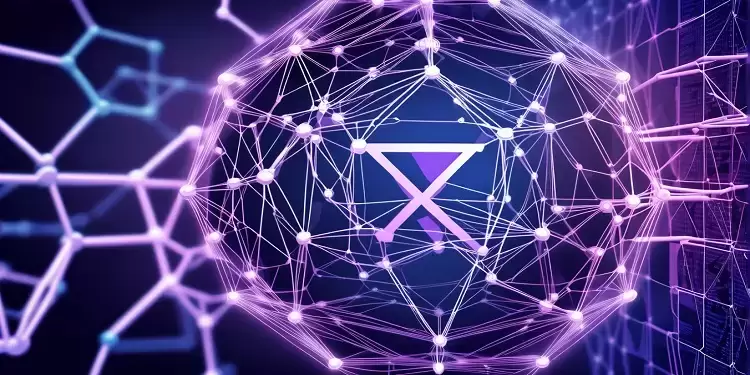 |
|
 |
|
 |
|
 |
|
 |
|
 |
|
 |
|
 |
|
 |
|
 |
|
 |
|
 |
|
 |
|
 |
|
 |
|
Cryptocurrency News Articles
Two Major Developments in Blockchain Technology Have Highlighted the Evolving Commitment of Key Players to Both Scalability and Futureproofing
Apr 11, 2025 at 10:11 pm
Two major developments in blockchain technology have highlighted the evolving commitment of key players to both scalability and futureproofing, with Exaion enhancing the Tezos ecosystem and Sui preparing for quantum computing threats. These moves underscore a broader industry trend of reinforcing infrastructure and security to meet emerging digital demands. By CoinDesk.

Two significant developments in the blockchain sphere have highlighted the industry's evolving commitment to both scalability and futureproofing, as Exaion expands its involvement in the Tezos ecosystem with Etherlink validation and Sui prepares for the implications of quantum computing.
Both moves are part of a broader industry trend to reinforce infrastructure and technology to meet emerging digital demands.
Exaion, a subsidiary of the French energy giant EDF Group, has become a validator for Etherlink, a Layer 2 Ethereum-compatible rollup that is being built on the Tezos blockchain.
Already an active baker on the Tezos network, Exaion's involvement with Etherlink marks a further step in its engagement with the ecosystem, showcasing an ongoing interest in the network's evolution.
Etherlink leverages Tezos Smart Rollups to enhance scalability by enabling the posting of transaction data to the Tezos mainnet in a highly efficient manner.
Exaion's advanced infrastructure is expected to be instrumental in amplifying the security and reliability of this process, providing a strong foundation for Etherlink's development.
Launched in late 2024, Etherlink is still in its early stages of deployment, with initial developers now building projects on the protocol.
As Etherlink continues to expand, its integration with Layer 1 chains like Ethereum is expected to drive further adoption among projects and developers.
"This decision by Exaion to join Etherlink is a testament to our company's longstanding commitment to delivering exceptional digital services and actively contributing to the cybersecurity of critical infrastructures," said a spokesperson from Exaion.
Having established validators like Exaion participating is a crucial factor for Etherlink as it launches. It will also bring more projects to the network, such as Spiko and Midas.
"We are grateful for Exaion's expertise and dedication in this venture. Their participation will be instrumental in ensuring the optimal performance and security of Etherlink as it expands its role in connecting the Ethereum and Tezos ecosystems." A Tezos representative added.
By taking part in Etherlink's validation process, Exaion is seen as aiding in the fusion of institutional adoption with cutting-edge blockchain innovation.
Industry observers believe that this collaboration may propel other traditional enterprises to engage more deeply with the Tezos ecosystem and its emerging Layer 2 solutions.
In another development in the realm of blockchain technology, Sui blockchain, developed by Mysten Labs, is actively updating its cryptographic infrastructure to prepare for the implications of quantum computing.
As quantum machines come closer to practical application, their ability to break classical encryption methods poses a threat to blockchain networks that still rely on elliptic curve and RSA-based systems for security.
According to Sui developers, the network was built with cryptographic adaptability in mind, allowing it to implement quantum-resistant algorithms and ensure the long-term protection of user data and transactions.
The Sui network is taking steps to integrate post-quantum cryptographic methods, such as lattice-based protocols CRYSTALS-Dilithium for digital signatures and FALCON for key exchange, which are currently being standardized by NIST.
These algorithms are designed around mathematical challenges that are difficult for even quantum computers to solve. In addition to transitioning its core encryption mechanisms, Sui is modifying key generation processes and updating hashing techniques to maintain resilience against quantum attacks.
To facilitate this transformation, Sui is also concentrating on improvements to its zero-knowledge proofs and other advanced cryptographic frameworks. The aim is to balance performance with futureproof security, ensuring that the blockchain remains efficient and at the forefront of technological advancements.
Sui is not the only major blockchain platform to address this emerging concern. Other leading blockchains, including Ethereum, Algorand, and Solana, are also exploring and deploying quantum-safe solutions.
Solana, for instance, has introduced the "Wintermint Vault," a new feature that introduces hash-based signatures, which are less susceptible to interference from quantum machines.
This focus on scalability and futureproofing underscores a broader industry trend. As the metaverse, Web3, and Industry 4.0 continue to evolve, institutions like Exaion are increasingly playing a role in connecting traditional and digital ecosystems.
Disclaimer:info@kdj.com
The information provided is not trading advice. kdj.com does not assume any responsibility for any investments made based on the information provided in this article. Cryptocurrencies are highly volatile and it is highly recommended that you invest with caution after thorough research!
If you believe that the content used on this website infringes your copyright, please contact us immediately (info@kdj.com) and we will delete it promptly.
-

-

-

- Tron (TRX) Has a Ginormous "Sell Wall" That Might Prevent the Coin From Climbing Higher
- Apr 19, 2025 at 05:40 am
- Tron (TRX) has fallen by a mere amount in price, sliding 1.26% over the last 24 hours to $0.2441. But what everyone is really noticing is a ginormous “sell wall” that might prevent the coin from climbing much higher.
-

-

-

-

-

-






























































